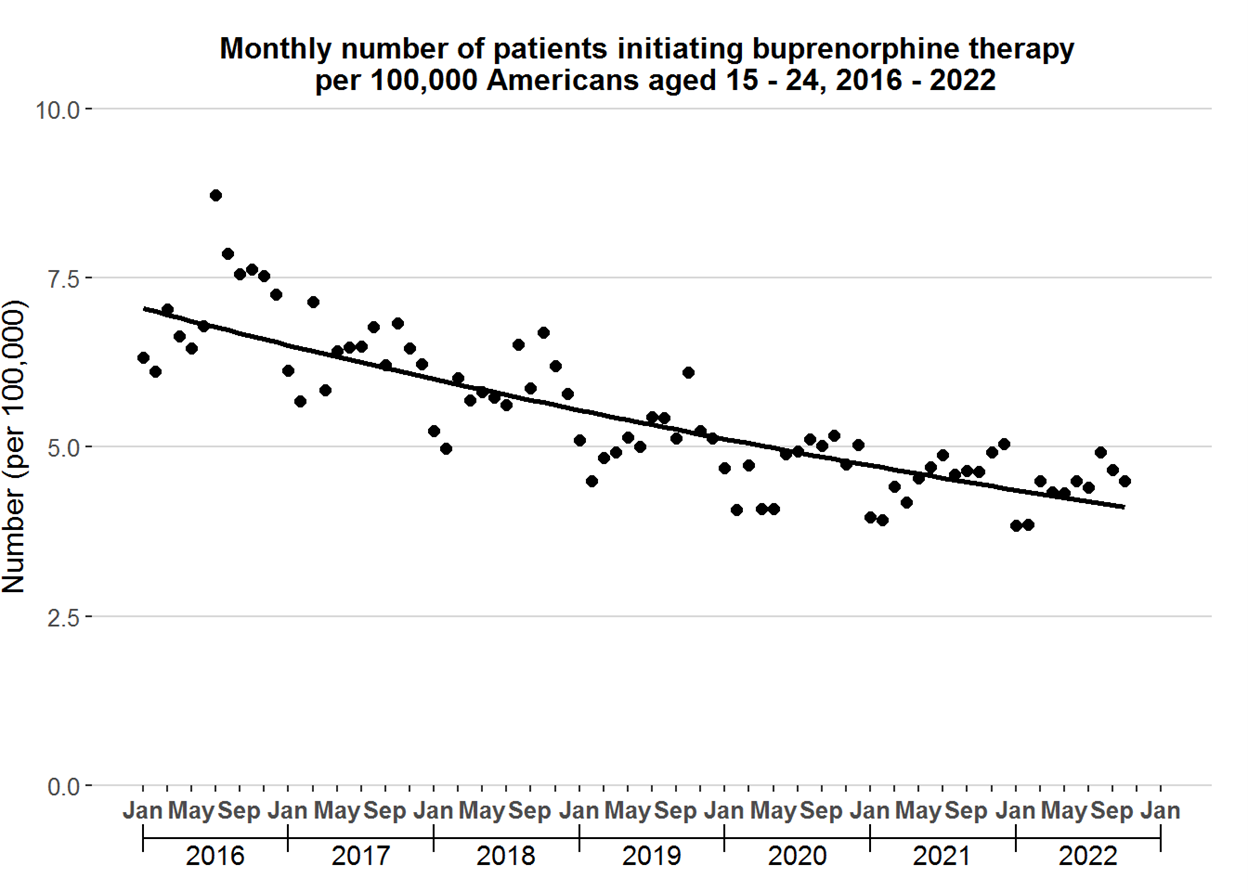Health Services Research
HSR 4: National or Novel
598 - National Trends in Buprenorphine Initiation and Retention among Adolescents and Young Adults, 2016-2022
Publication Number: 598.32

Kao-Ping Chua, MD, PhD (he/him/his)
Assistant Professor of Pediatrics
University of Michigan Medical School
Ann Arbor, Michigan, United States
Presenting Author(s)
Background:
Opioid-related mortality among adolescents and young adults (AYAs) aged 15-24 years is at a record high. As such, it is critical to increase initiation of therapy with buprenorphine, a highly effective medication for opioid use disorder, in this population. Ensuring retention in therapy is also critical, as retention is strongly associated with decreased opioid-related mortality. Despite this, recent national data on buprenorphine initiation and retention in AYAs are unavailable.
Objective:
To assess national trends in buprenorphine initiation and retention among AYAs
Design/Methods:
We analyzed the IQVIA Longitudinal Prescription Database, an all-payer database that reports 92% of prescriptions dispensed in U.S. retail pharmacies. The study period spanned January 2016 through October 2022. For each month during this period, we calculated the number of AYAs initiating buprenorphine therapy per 100,000 AYAs in the U.S. We identified these patients based on the occurrence of an “initial” buprenorphine prescription, defined as a prescription for a patient without buprenorphine dispensing in the prior 180 days. Among AYAs initiating buprenorphine therapy, we assessed the monthly proportion retained in therapy. Following a National Quality Forum-endorsed quality measure, we defined retention as the occurrence of ≥180 days of continuous buprenorphine treatment following the dispensing date of the initial buprenorphine prescription without any gaps exceeding 7 days. Analyses of retention stopped in April 2022 owing to the need for a 180-day look-forward period. For both buprenorphine initiation and retention, we used joinpoint regression to assess for any slope changes.
Results:
During the study period, 183,745 unique AYAs initiated buprenorphine. The number of AYAs initiating buprenorphine therapy per 100,000 AYAs decreased from 6.3 to 4.5 without any slope changes (monthly percent change: -0.67%, 95% CI: -0.79%, -0.54%) (Figure 1). From January 2016 through April 2022, monthly retention rates decreased from 14.3% to 9.4% without any slope changes (monthly percentage change: -0.5%, 95% CI: -0.70%, -0.31%) (Figure 2). Retention rates were consistently lower in the second half of the year compared with the first half.
Conclusion(s):
Between 2016-2022, the rate of buprenorphine initiation and retention among AYAs decreased. Findings suggest that critical opportunities to prevent opioid-related mortality in AYAs are being missed. Future studies should identify which interventions can mitigate barriers to buprenorphine initiation and retention and explore the drivers of cyclical patterns in retention rates. 
.png)
